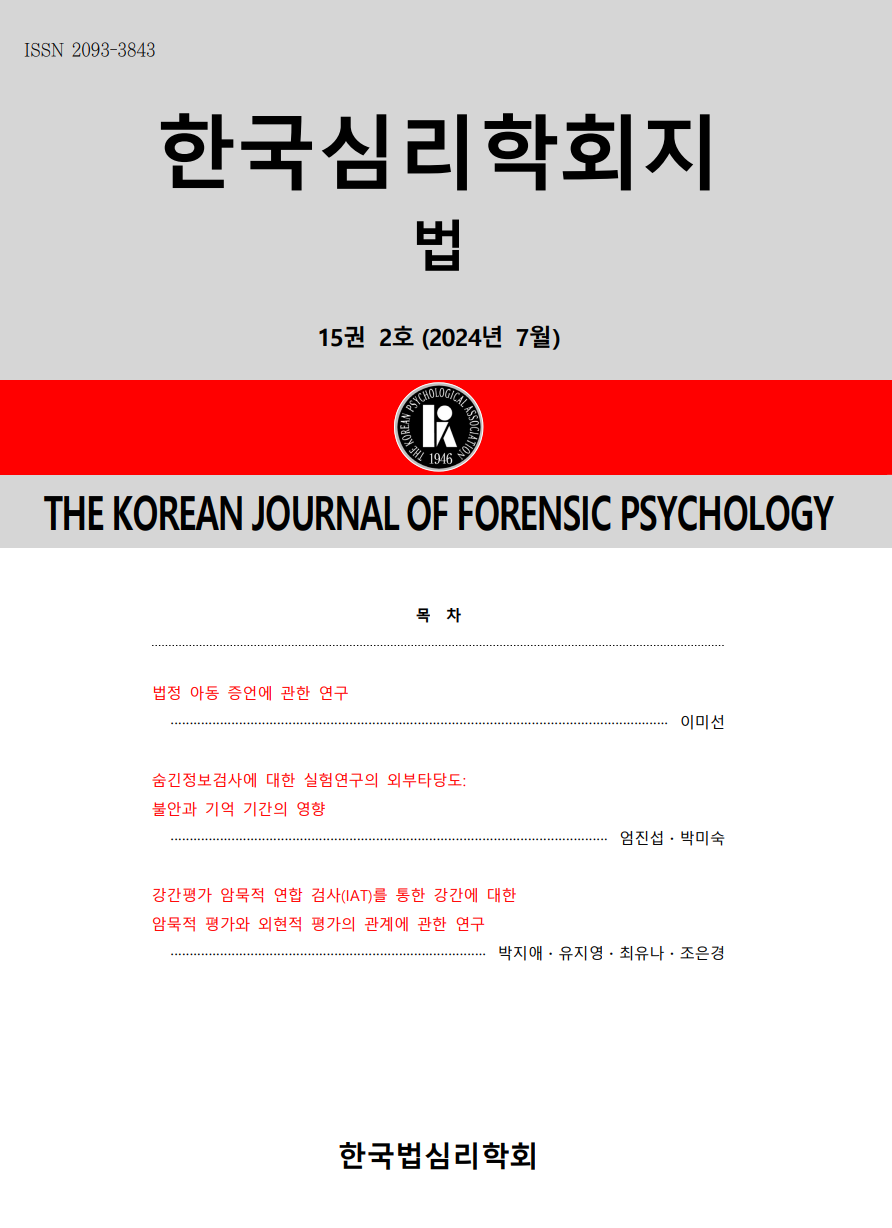open access
메뉴
open access
메뉴 ISSN : 2093-3843
ISSN : 2093-3843
In the P300-based concealed information test, most commonly used methods to detect whether a subject is lying are the bootstrapped amplitude difference (BAD) and the bootstrap correlation difference (BCD). Previous studies comparing the accuracy of the two methods reported inconsistent results. Most studies showed that the BAD is more accurate than the BCD, but some studies found that the BCD had a higher accuracy rate than the BAD. The purpose of the study is to identify conditions where the each method has higher accuracy compared to the other. In the result of Monte Carlo study, the false alarm rate of the BAD was generally higher than that of the BCD, and the hit rate of the BAD was higher than that of the BCD. Compared to the condition where the P300 latencies of probe and irrelevant were similar, the hit rate of the BCD was decreased when the P300 latency of probe was about 100 ms faster, and the hit rate of the BCD was increased when the P300 latency of probe was about 100 ms slower. When the P300 amplitude of the probe was slightly larger than that of the irrelevant and the P300 latency of probe was longer than that of target, the hit rate of the BCD was higher than that of the BAD. The reason why the false alarm rate of the BAD is higher than that of BCD and why the hit rate of the BCD is affected by the P300 latency of the probe were discussed.